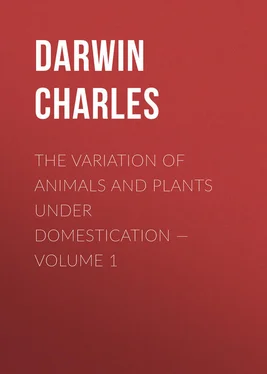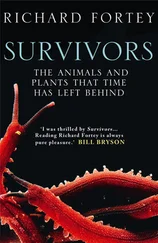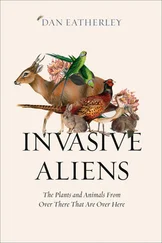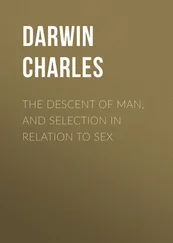Charles Darwin - The Variation of Animals and Plants under Domestication — Volume 1
Здесь есть возможность читать онлайн «Charles Darwin - The Variation of Animals and Plants under Domestication — Volume 1» — ознакомительный отрывок электронной книги совершенно бесплатно, а после прочтения отрывка купить полную версию. В некоторых случаях можно слушать аудио, скачать через торрент в формате fb2 и присутствует краткое содержание. Жанр: foreign_antique, foreign_prose, на английском языке. Описание произведения, (предисловие) а так же отзывы посетителей доступны на портале библиотеки ЛибКат.
- Название:The Variation of Animals and Plants under Domestication — Volume 1
- Автор:
- Жанр:
- Год:неизвестен
- ISBN:нет данных
- Рейтинг книги:5 / 5. Голосов: 1
-
Избранное:Добавить в избранное
- Отзывы:
-
Ваша оценка:
- 100
- 1
- 2
- 3
- 4
- 5
The Variation of Animals and Plants under Domestication — Volume 1: краткое содержание, описание и аннотация
Предлагаем к чтению аннотацию, описание, краткое содержание или предисловие (зависит от того, что написал сам автор книги «The Variation of Animals and Plants under Domestication — Volume 1»). Если вы не нашли необходимую информацию о книге — напишите в комментариях, мы постараемся отыскать её.
The Variation of Animals and Plants under Domestication — Volume 1 — читать онлайн ознакомительный отрывок
Ниже представлен текст книги, разбитый по страницам. Система сохранения места последней прочитанной страницы, позволяет с удобством читать онлайн бесплатно книгу «The Variation of Animals and Plants under Domestication — Volume 1», без необходимости каждый раз заново искать на чём Вы остановились. Поставьте закладку, и сможете в любой момент перейти на страницу, на которой закончили чтение.
Интервал:
Закладка:
That methodical selection has done wonders within a recent period in modifying our cattle, no one doubts. During the process of methodical selection it has occasionally happened that deviations of structure, more strongly pronounced than mere individual differences, yet by no means deserving to be called monstrosities, have been taken advantage of: thus the famous Longhorn Bull, Shakespeare, though of the pure Canley stock, "scarcely inherited a single point of the long-horned breed, his horns excepted (3/71. 'Youatt on Cattle' page 193. A full account of this bull is taken from Marshall.); yet in the hands of Mr. Fowler, this bull greatly improved his race. We have also reason to believe that selection, carried on so far unconsciously that there was at no one time any distinct intention to improve or change the breed, has in the course of time modified most of our cattle; for by this process, aided by more abundant food, all the lowland British breeds have increased greatly in size and in early maturity since the reign of Henry VII. (3/72. 'Youatt on Cattle' page 116. Lord Spencer has written on this same subject.) It should never be forgotten that many animals have to be annually slaughtered; so that each owner must determine which shall be killed and which preserved for breeding. In every district, as Youatt has remarked, there is a prejudice in favour of the native breed; so that animals possessing qualities, whatever they may be, which are most valued in each district, will be oftenest preserved; and this unmethodical selection assuredly will in the long run affect the character of the whole breed. But it may be asked, can this rude kind of selection have been practised by barbarians such as those of southern Africa? In a future chapter on Selection we shall see that this has certainly occurred to some extent. Therefore, looking to the origin of the many breeds of cattle which formerly inhabited the several districts of Britain, I conclude that, although slight differences in the nature of the climate, food, etc., as well as changed habits of life, aided by correlation of growth, and the occasional appearance from unknown causes of considerable deviations of structure, have all probably played their parts; yet that the occasional preservation in each district of those individual animals which were most valued by each owner has perhaps been even more effective in the production of the several British breeds. As soon as two or more breeds were formed in any district, or when new breeds descended from distinct species were introduced, their crossing, especially if aided by some selection, will have multiplied the number and modified the characters of the older breeds.
SHEEP.
I shall treat this subject briefly. Most authors look at our domestic sheep as descended from several distinct species. Mr. Blyth, who has carefully attended to the subject, believes that fourteen wild species now exist, but "that not one of them can be identified as the progenitor of any one of the interminable domestic races." M. Gervais thinks that there are six species of Ovis (3/73. Blyth on the genus Ovis in 'Annals and Mag. of Nat. History' volume 7 1841 page 261. With respect to the parentage of the breeds see Mr. Blyth's excellent articles in 'Land and Water' 1867 pages 134, 156. Gervais 'Hist. Nat. des Mammiferes' 1855 tome 2 page 191.) but that our domestic sheep form a distinct genus, now completely extinct. A German naturalist (3/74. Dr. L. Fitzinger 'Ueber die Racen des Zahmen Schafes' 1860 s. 86.) believes that our sheep descend from ten aboriginally distinct species, of which only one is still living in a wild state! Another ingenious observer (3/75. J. Anderson 'Recreations in Agriculture and Natural History' volume 2 page 264.), though not a naturalist, with a bold defiance of everything known on geographical distribution, infers that the sheep of Great Britain alone are the descendants of eleven endemic British forms! Under such a hopeless state of doubt it would be useless for my purpose to give a detailed account of the several breeds; but a few remarks may be added.
Sheep have been domesticated from a very ancient period. Rutimeyer (3/76. 'Pfahlbauten' s. 127, 193.) found in the Swiss lake-dwellings the remains of a small breed, with thin tall legs, and horns like those of a goat, thus differing somewhat from any kind now known. Almost every country has its own peculiar breed; and many countries have several breeds differing greatly from each other. One of the most strongly marked races is an Eastern one with a long tail, including, according to Pallas, twenty vertebrae, and so loaded with fat that it is sometimes placed on a truck, which is dragged about by the living animal. These sheep, though ranked by Fitzinger as a distinct aboriginal form, bear in their drooping ears the stamp of long domestication. This is likewise the case with those sheep which have two great masses of fat on the rump, with the tail in a rudimentary condition. The Angola variety of the long-tailed race has curious masses of fat on the back of the head and beneath the jaws. (3/77. 'Youatt on Sheep' page 120.) Mr. Hodgson in an admirable paper (3/78. 'Journal of the Asiatic Soc. of Bengal' volume 16 pages 1007, 1016.) on the sheep of the Himalaya infers from the distribution of the several races, "that this caudal augmentation in most of its phases is an instance of degeneracy in these pre-eminently Alpine animals." The horns present an endless diversity in character; being not rarely absent, especially in the female sex, or, on the other hand, amounting to four or even eight in number. The horns, when numerous, arise from a crest on the frontal bone, which is elevated in a peculiar manner. It is remarkable that multiplicity of horns "is generally accompanied by great length and coarseness of the fleece." (3/79. 'Youatt on Sheep' pages 142-169.) This correlation, however, is far from being general; for instance, I am informed by Mr. D. Forbes, that the Spanish sheep in Chile resemble, in fleece and in all other characters, their parent merino-race, except that instead of a pair they generally bear four horns. The existence of a pair of mammae is a generic character in the genus Ovis as well as in several allied forms; nevertheless, as Mr. Hodgson has remarked, "this character is not absolutely constant even among the true and proper sheep: for I have more than once met with Cagias (a sub-Himalayan domestic race) possessed of four teats." (3/80. 'Journal Asiat. Soc. of Bengal' volume 16 1847 page 1015.) This case is the more remarkable as, when any part or organ is present in reduced number in comparison with the same part in allied groups, it usually is subject to little variation. The presence of interdigital pits has likewise been considered as a generic distinction in sheep; but Isidore Geoffroy (3/81. 'Hist. Nat. Gen.' tome 3 page 435.) has shown that these pits or pouches are absent in some breeds.
In sheep there is a strong tendency for characters, which have apparently been acquired under domestication, to become attached either exclusively to the male sex, or to be more highly developed in this than in the other sex. Thus in many breeds the horns are deficient in the ewe, though this likewise occurs occasionally with the female of the wild musmon. In the rams of the Wallachian breed, "the horns spring almost perpendicularly from the frontal bone, and then take a beautiful spiral form; in the ewes they protrude nearly at right angles from the head, and then become twisted in a singular manner." (3/82. 'Youatt on Sheep' page 138.) Mr. Hodgson states that the extraordinarily arched nose or chaffron, which is so highly developed in several foreign breeds, is characteristic of the ram alone, and apparently is the result of domestication. (3/83. 'Journal Asiat. Soc. of Bengal' volume 16 1847 pages 1015, 1016.) I hear from Mr. Blyth that the accumulation of fat in the fat-tailed sheep of the plains of India is greater in the male than in the female; and Fitzinger (3/84. 'Racen des Zahmen Schafes' s. 77.) remarks that the mane in the African maned race is far more developed in the ram than in the ewe.
Читать дальшеИнтервал:
Закладка:
Похожие книги на «The Variation of Animals and Plants under Domestication — Volume 1»
Представляем Вашему вниманию похожие книги на «The Variation of Animals and Plants under Domestication — Volume 1» списком для выбора. Мы отобрали схожую по названию и смыслу литературу в надежде предоставить читателям больше вариантов отыскать новые, интересные, ещё непрочитанные произведения.
Обсуждение, отзывы о книге «The Variation of Animals and Plants under Domestication — Volume 1» и просто собственные мнения читателей. Оставьте ваши комментарии, напишите, что Вы думаете о произведении, его смысле или главных героях. Укажите что конкретно понравилось, а что нет, и почему Вы так считаете.












